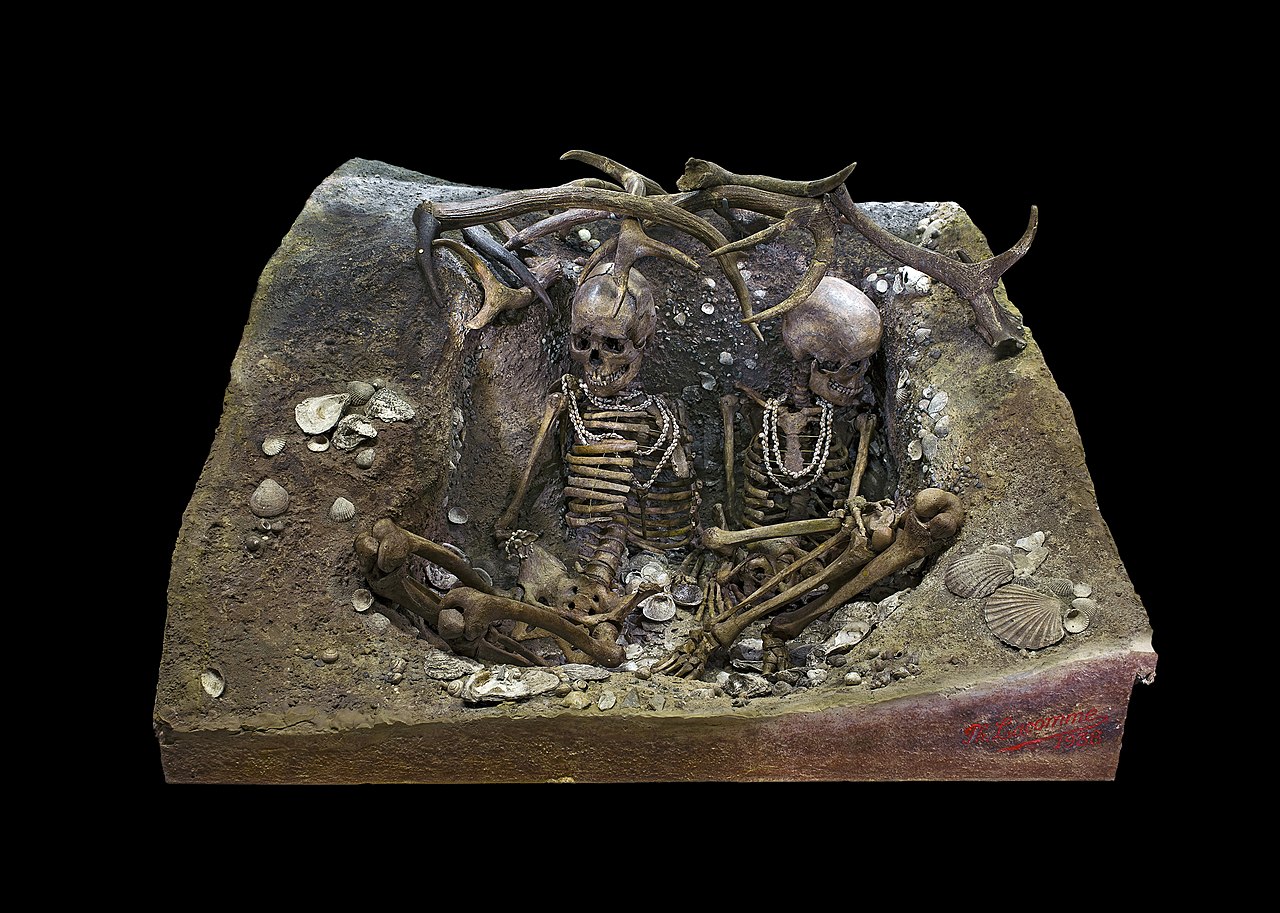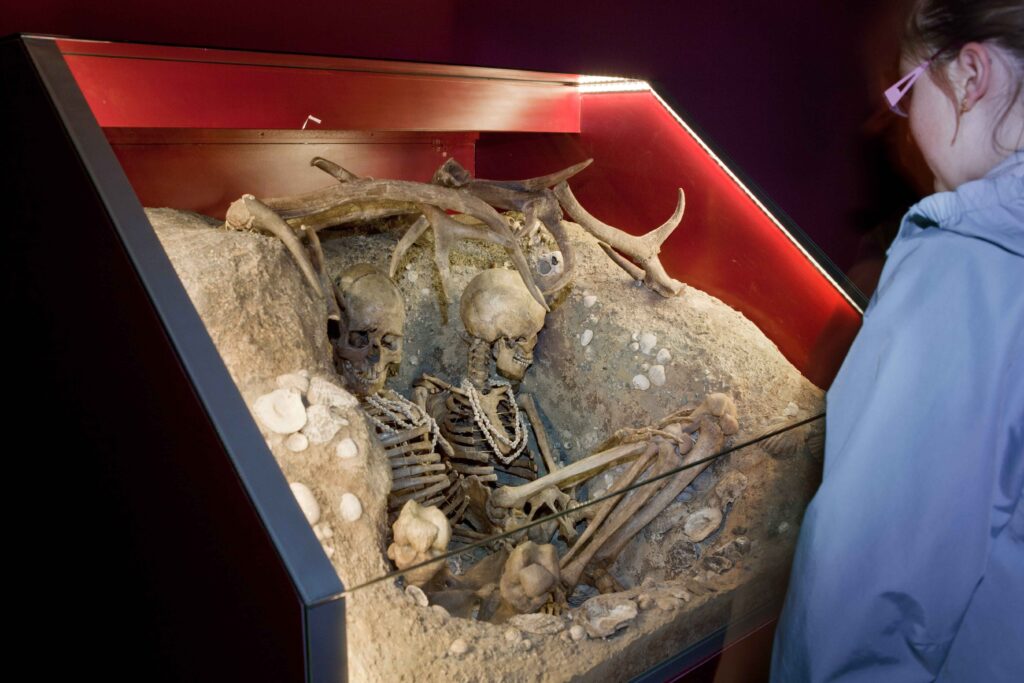Tragic Echoes from the Mesolithic: The Violent End of Téviec’s Women
The remains of two women, believed to have lived around 6740-5680 BCE and who met a violent end, were dramatically unearthed at Téviec, a small island off the coast of Brittany, France. This extraordinary archaeological discovery offers a chilling, yet incredibly valuable, glimpse into the often brutal realities of life in the Mesolithic period. Their burial, a double interment within a carefully constructed grave, has captivated archaeologists and forensic anthropologists, sparking intense debate about the circumstances of their deaths and the social dynamics of their community.
Forensic analysis of the two skeletons, often referred to as the “Ladies of Téviec,” revealed clear evidence of a violent demise. One woman suffered at least five blows to the head, suggesting a brutal attack, while the other showed signs of multiple arrow wounds, with flint arrowheads found embedded in her vertebrae. This irrefutable evidence of a violent end, rather than natural causes, immediately raises profound questions: Were they victims of inter-group conflict, a personal dispute, or perhaps even a ritualistic killing? The answers remain elusive, fueling ongoing research and interpretations.

Despite their tragic end, the Téviec women represent a uniquely preserved window into Mesolithic funerary practices and the lives of hunter-gatherer societies in Western Europe. They were buried together in a meticulously prepared pit, protected by a cairn of antlers, and accompanied by grave goods, including shell jewelry. This careful deposition, despite their violent deaths, suggests they were afforded respect or held significant status within their community. Their discovery not only provides direct evidence of violence in a prehistoric context but also underscores the enduring mysteries of our ancient ancestors, whose final moments continue to speak volumes across millennia.
